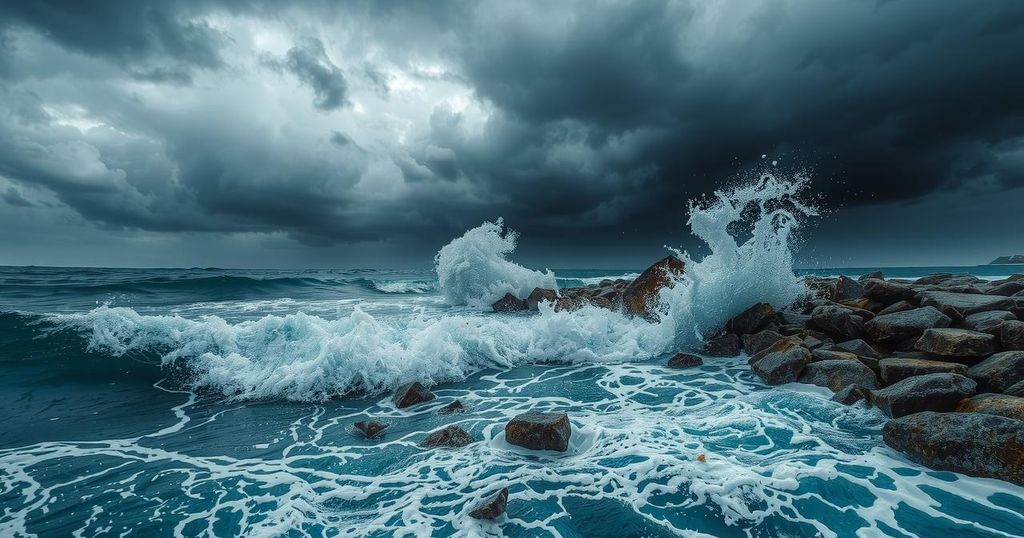Madagascar faces the aftermath of Cyclone Elvis, which caused at least five deaths, while bracing for Cyclone Faida, expected to impact the northern coast on February 4. Elvis resulted in significant rainfall and damages, following earlier storms like Dikeledi. The region’s storm patterns may worsen due to climate change, prompting calls for improved forecasting.
Madagascar is preparing for the impending arrival of Tropical Cyclone Faida, which is forecast to make landfall on its northern coast on February 4. This comes on the heels of Cyclone Elvis, which recently dissipated and was responsible for at least five fatalities in the Vohibato district due to lightning-related incidents, as reported by the European Civil Protection and Humanitarian Aid Operations (ECHO). Two additional individuals sustained injuries during Elvis’s path.
Elvis originated over the Mozambique Channel on January 28 and struck Madagascar’s southwestern coast the following day, bringing heavy rainfall and winds of up to 84 kilometers per hour (52 miles per hour). The cities of Toliara and Taolagnaro recorded significant rainfall, with 196 millimeters (7.7 inches) and 178 millimeters (7 inches) over five days, respectively, according to The Guardian. The cyclone dissipated over the southern Indian Ocean during the preceding weekend.
Tropical Cyclone Faida formed on January 23, bringing additional concerns as it impacted Mauritius and Réunion Island before moving toward northern Madagascar. The ECHO report from February 3 notes that Faida has maximum sustained winds of 65 kilometers per hour (40 miles per hour) and is expected to strengthen as it progresses westward, affecting multiple regions in Madagascar. Local authorities in Réunion Island have advised residents to remain alert for weather updates and to assemble emergency supplies.
In the weeks prior, Madagascar had already experienced devastation from Cyclone Dikeledi, which caused flooding and landslides, resulting in at least ten deaths. The cyclone notably impacted a tortoise sanctuary, leading to the drowning of numerous radiated and spider tortoises. Fortunately, over 10,000 tortoises swept away during the flooding were subsequently rescued, as reported by AP.
Recently, a conference took place in Zambia, where meteorological experts, scientists, and economists gathered to enhance forecasting capabilities in Southern Africa using innovative methodologies. The U.K. Met Office has highlighted concerns that the region is likely to face an increase in storm activity as climate change affects weather patterns, citing the recent impact of Tropical Cyclone Chido in December.
Madagascar is frequently subjected to tropical cyclones due to its geographical location in the Indian Ocean. With the changing climate, there have been noted increases in the frequency and intensity of such storms. The region’s vulnerability was again highlighted with recent incidents involving Cyclones Elvis and Dikeledi, both of which have resulted in significant damage and loss of life. Understanding these cyclones’ impacts is essential for improving disaster preparedness and response.
Cyclone Elvis has tragically claimed five lives in Madagascar as the country braced for the oncoming Cyclone Faida. While Elvis caused severe weather and reported fatalities, Faida’s anticipated landfall raises further concerns for the region. Continued monitoring and improvements in forecasting methodologies are critical, particularly with the likelihood of more frequent storms in Southern Africa due to climate change.
Original Source: news.mongabay.com




